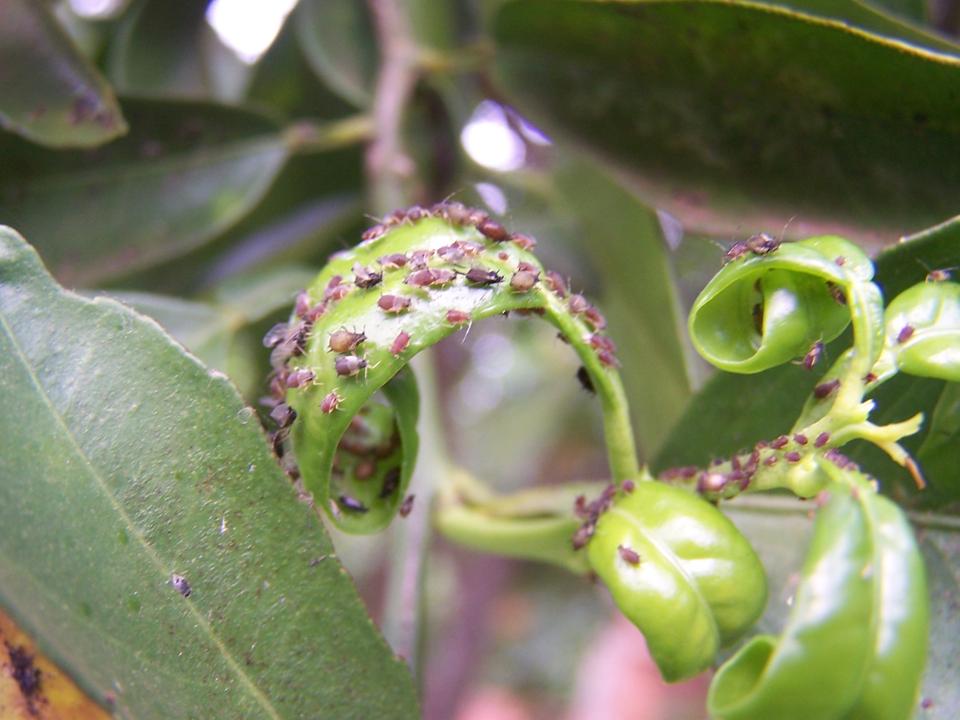

Designed by Paul Smith 2006. This website is copyrighted by law. Material contained herewith may not be used without the prior written permission of FAUNA Paraguay. Photographs on this web-site were taken by Paul Smith, Hemme Batjes, Regis Nossent,
Alberto Esquivel, Arne Lesterhuis, Rebbeca Zarza, José Luis Cartes and Hugo del Castillo and are used with their permission.
SUPERFAMILY APHIDOIDEA: FAMILY APHIDIDAE: APHIDS
Constituting almost 4000 species worldwide, the Aphids are a huge and ubiquitous family, often greatly abundant and having a serious negative impact on worldwide agriculture. All species are sap suckers with small body size (maximum of around 6mm) and soft bodies (usually green or black, but sometimes other colours). Winged and wingless forms are present in most species. When present they are held tent-like over the pear-shaped body when at rest. Antennae are long and slender with up to six segments and in many species the legs are long and thin. Mouthparts or eyes are reduced in some species and forms. The fifth or sixth abdominal segments possess protruding tube-like "siphuncli" which secrete protective substances when the aphid is attacked. In general aphids are slow-moving and colonial, feeding on sap and producing honeydew, a sweet substance much favoured by ants which frequently form symbiotic relationships with them - so called "aphid farming". Honeydew is sweet because of an excess of sugar in the diet. As their diet is low in nitrogenous compounds, aphids possess specialised cells known as mycetocytes which harbour symbiotic bacteria that produce essential amino acids to upgrade the diet. Life cycles may be simple or extremely complex, invovling both sexual and asexual forms, live birth, egg-laying and/or alternation of generations between unrelated host plant species. In sexual forms both wings and mouthparts are often absent. Aphid saliva is toxic to plant tissues and affected plants may show a variety of symptoms from yellowing to wilting and leaf-curling. Furthermore aphids frequently act as vectors for plant viruses, making them the single most damaging pest group to industrial agriculture worldwide.
 | FIGURE 1 |
|
FIGURE 1 - Unidentified sp. on citrus tree, Encarnación, Departamento Itapúa (Paul Smith August 2007).

